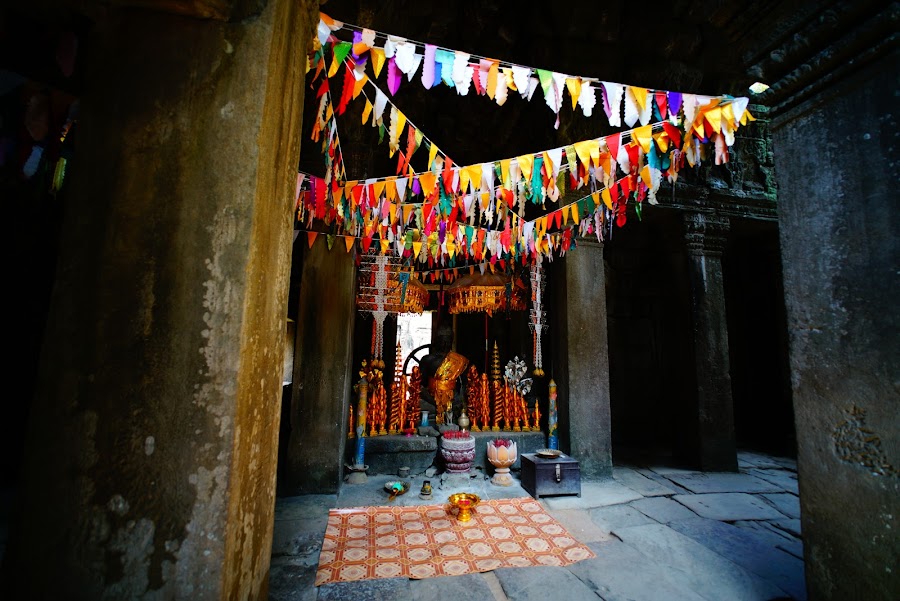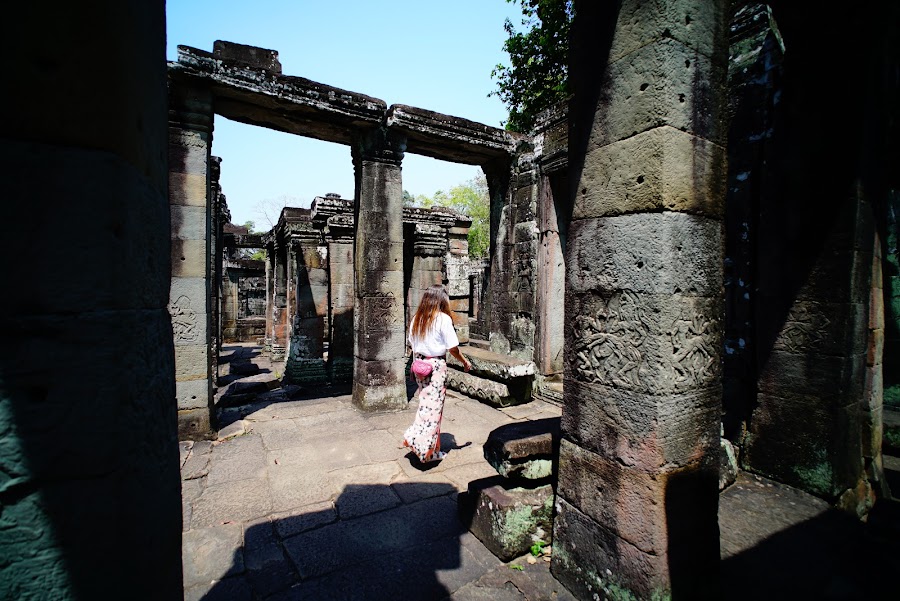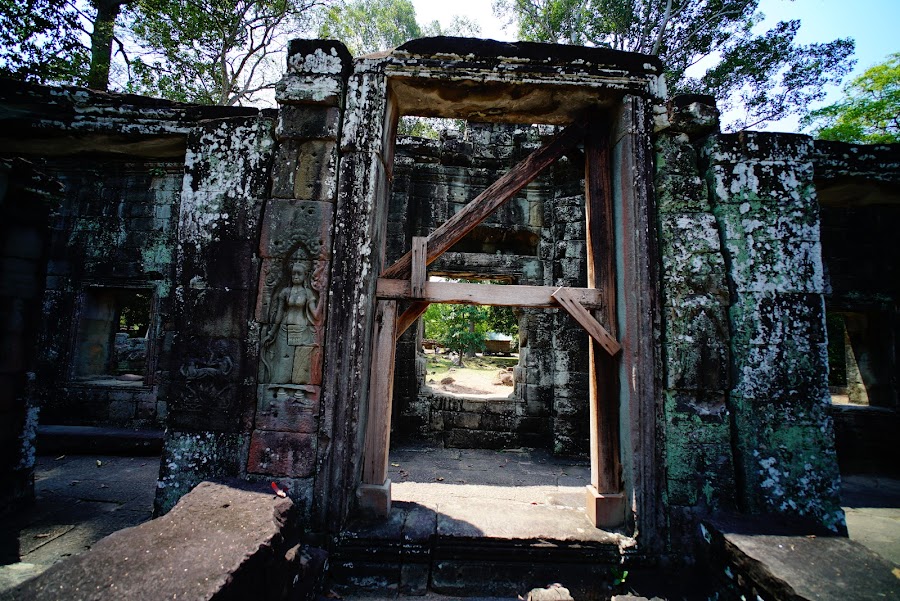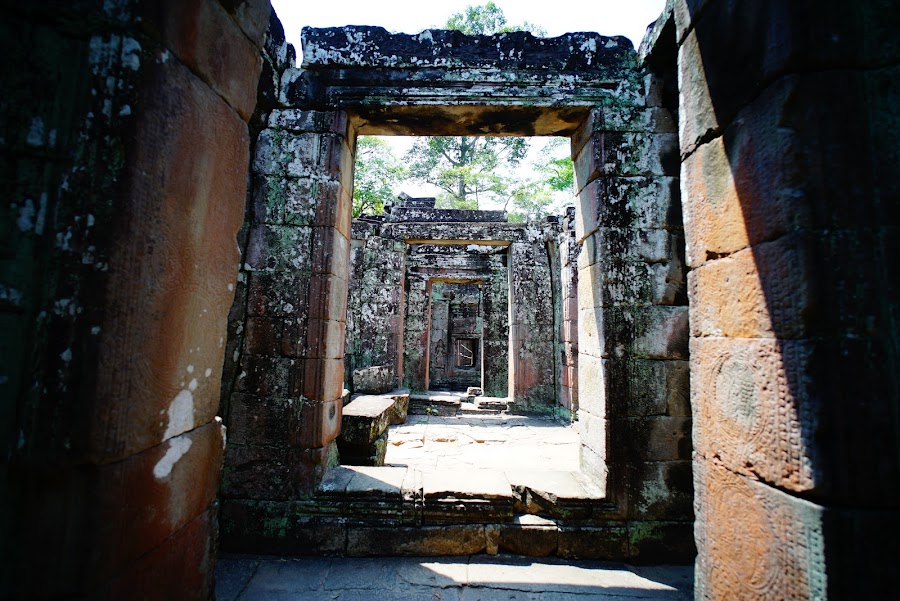
Banteay Kdei「ប្រាសាទបន្ទាយក្តី」
- Date: Early 13th century
- Style: Bayon
- Highlights: Just opposite to Srah Sang, delivers a contrasting view of ruined temple where the shades of nature alternate with the changing colours of the stone. Completely ruined but at the same time well preserved. One of our favourites.
The closer an Empire comes to its end, the larger the constructions it dares to build.



Many walls are decorated with apsaras: beautiful, supernatural female beings, youthful, elegant and superb dancers. Kind of the angels of Indian mythology, but a bit more sexualised I reckon.

The Buddha image at the entrance to the moat is the only one well preserved.

The temple used to be rich in statues but as of today most of them are either stolen or destroyed.

The Hall of Dancers has four open courtyards, pillars crossed by vaults and fine carvings of apsaras. It is made of laterite a rock type rich in iron and aluminium commonly formed in hot and wet tropical areas (between the tropics). Due to its composition, the gorgeous changing shades pictured appear over time. Laterite is relatively soft and easy to be cut into blocks when freshly retrieved from the ground, however after being exposed to sun and air it becomes extremely hard and durable.




The inner enclosure has 4 corner towers finished into small Gopura or sanctuary towers which we all associate with Khmer architecture, featuring several storeys progressively reducing in width that represent the concentric levels of Mount Meru aka the house of gods in Indian mythology.
When the idea is taken to the extreme we see the temple mountain where enclosures represent the mountain chains surrounding Mount Meru, while the moat represents the ocean. The structure takes shape as a pyramid of several levels, the home of the gods being the most elevated sanctuary at the center of the temple, like we will see in Baphuon, Pre Rup, Ta Keo and Angkor Wat.


When exploring the narrow galleries, it is important to bear in mind that Khmer temples were never intended to be a meeting place for the faithful, but the palace of a God, who was enshrined there to allow him to bestow his beneficence - particularly to the temple founder and his family. Hence the many galleries and hidden figures, turning an actual temple into a condo for deities where the main God owned the central obviously best unit.


The vaults built in sandstone and laterite have collapsed at several locations of the gallery, giving the site an extra charm.

On the way out, local artisans sell their creations in a much nicer environment than the city.
























No comments
Post a Comment